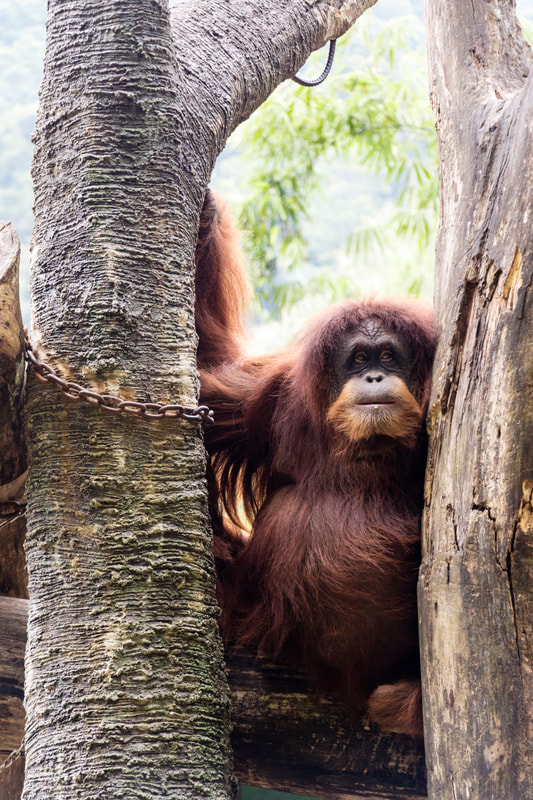Though initially described as unique as far back as 1939 when a population of the animals was discovered in Northern Sumatra, it wasn’t until the result of a phylogenetic study was published in 2017 that the Tapanuli Orangutan had a new identity and a new name. While the name is new, the story of this great ape, and the tale behind its lineage, goes back far longer than the twentieth century. Tracing its origins back nearly 3.5 million years ago when it diverged from its closest relative, the Sumatran Orangutan, the Tapanuli orang set off down a path shaped by a living planet. Episodic sea level rises, which flooded land bridges between Borneo and Sumatra, further isolated the apes, and the massive Lake Toba volcanic eruption 75,000 years ago, all but cut off the apes for good. This isolation drove specialization.
Differing significantly enough from the Bornean and Sumatran Orangutan species, the Tapanuli Orangutan was declared a distinct species by virtue of its genetics. This difference is seen by the naked eye in terms of certain anatomical features such as smaller heads, wider faces, and longer upper canines than their cousins. Behaviorally, these animals differ markedly from their relatives as well. A single aspect of their nascent study offers tantalizing glimpses into the hidden world of this primate. After thousands of hours of meticulous observations by field biologists, these great apes have never been observed on the ground, leading scientists to conclude they are purely, or virtually arboreal! This in turn has led to theorizing that they have adapted to an entirely arboreal lifestyle to evade the predations of the Sumatran Tiger, which though capable of climbing, is not as adept in the trees as the great apes. The timing it seems, is both fortuitous and critical for the orangs. With the discovery of this single known population of just 800 animals, comes the imperative to protect their limited habitat, its quality as well as quantity. Likewise, given the proverbial thimble of knowledge we have amassed on these newly discovered great apes, who knows what we will uncover of their behavioral and physical aspects through rigorous field work among the trees in their rainforest home? Though I work with wildlife both under human care and in the wild, what astounds me is the discovery of a great ape well into the 21st century. With an astonishing 20,000 new species discovered each year, I fully expect new species of insects, scorpions, crabs, birds, frogs, and lizards to receive scientific description. Even mammals are not unexpected. Mice, bats, marsupial possums, and small monkeys turn up each year. Yet, the idea that a 200-pound ape has been living on our planet for our entire existence and has just blipped on our radar in the past few years staggers me. I think that’s what is most significant about this discovery. On the surface, it’s just another species—a new mammal. Yet, in a sense, it is far more. The Tapanuli orang reminds us not just about the pace and scope of discovery in our planet’s rainforests, on its mountain slopes, and beneath its waves each year. It emphatically proves that we have so much to discover about our world and its nearly unimaginable biodiversity. It also stokes the incentive of potential discovery to usher in a new golden age of exploration. In addition to the great ape, discoveries of the last few years include a great cat and a great whale! The most significant discoveries are those which spawn others in their wake. With the Tapanuli Orangutan, we have just such a discovery. Let’s explore together and see what we uncover.
0 Comments
Leave a Reply. |
Archives
July 2024
|
Connecticut’s Beardsley Zoo is dedicated to acquainting a diverse public to the delicate balance that exists between living things and their environment.
Connecticut's Beardsley Zoo is a 501(c)(3) not for profit owned and operated by the Connecticut Zoological Society.
Connecticut's Beardsley Zoo is a 501(c)(3) not for profit owned and operated by the Connecticut Zoological Society.
© 2022 Connecticut's Beardsley Zoo



 RSS Feed
RSS Feed





